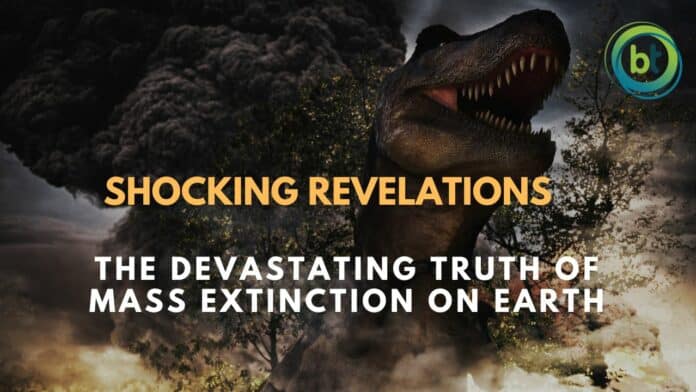In a slow-motion catastrophe reminiscent of the comet strike that wiped out the dinosaurs, human activities are causing the extinction of entire branches of life on Earth. Scientists warn that this is not just a threat to the survival of various species, but it also endangers the very existence of human civilization. The current mass extinction, referred to as the sixth mass extinction, has become alarmingly visible in recent months, as wildlife across the globe suffers devastating losses, resulting from human-induced environmental changes. The Devastating Truth of Mass Extinction.
Unprecedented Scale of Extinction:
According to a study conducted by ecologists Gerardo Ceballos and Paul Ehrlich, 73 genera of back-boned animals have gone extinct in the past 500 years, compared to previous genus-level extinctions. This extinction rate is 35 times higher than the natural background extinction rate. To put it into perspective, it would have taken 18,000 years for the same number of genera to vanish without human interference. Furthermore, studies have revealed similarly high rates of extinction for plants, fungi, and invertebrates.
Impact on Ecosystems:
The interconnectedness of species within ecosystems means that the loss of certain species groups can have cascading effects with severe consequences. The extinction of species that perform critical ecological functions directly affects humans. For instance, the disappearance of mosquito-devouring frogs has led to an increase in malaria infections in Central America. Additionally, the loss of entire ecological functions disrupts the delicate balance of nature, affecting the surrounding biological cycles.
Future Projections:
Ceballos and Ehrlich predict that the rate of extinction will continue to rise if current trends persist. If all currently endangered genera become extinct by 2100, the equivalent of the last 300 years of loss would have occurred in just 100 years, far surpassing natural background extinction rates. The most vulnerable species are often the most unique and irreplaceable, resulting in the loss of millions of years of evolutionary history and critical functions that contribute to the overall functioning of ecosystems.
Climate Change and Other Factors:
While climate change plays a significant role in destabilizing ecosystems, the sixth mass extinction is not solely attributed to it. Human activities such as plastic pollution, pesticide use, habitat destruction, and poaching also contribute to the crisis. Addressing these multifaceted issues requires immediate and unprecedented efforts on political, economic, and social fronts.
The Way Forward:
Unlike the non-avian dinosaurs eliminated by a comet, we have the knowledge and ability to alter our course and prevent further damage. However, the next two decades are critical, as they will likely determine the future of biodiversity and the survival of Homo sapiens. Immediate action at an unprecedented scale is essential to prevent further extinctions and mitigate the societal impacts of this crisis.
The ongoing mass extinction poses a grave threat to the survival of various species and the overall functioning of ecosystems. Human activities are rapidly causing irreversible damage to the tree of life, leading to the loss of entire branches and ecological functions. To avert the complete collapse of biodiversity and ensure a sustainable future for humanity, urgent action is required to address climate change, habitat destruction, pollution, and other factors contributing to this crisis.
Keywords: Devastating Truth of Mass Extinction, mass extinction, extinction of species, human activities, ecological functions, biodiversity, climate change, habitat destruction, plastic pollution, pesticide use, irreversible damage.























